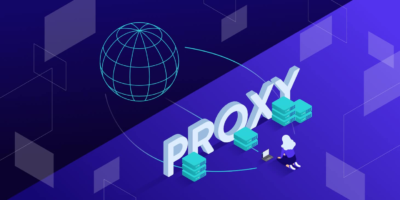Strategies For SMEs To Navigate The Cybersecurity Risks Of Online Lending

Small and medium-sized businesses (SMEs) are increasingly taking advantage of internet lending’s simplicity and cost-effectiveness as mentioned by a list from Provenir. However, with the growth of cyber threats, small and medium-sized businesses (SMEs) must be aware of the dangers involved with online lending and take precautions to protect their information and assets.
What Are The Cybersecurity Risks Of Online Lending?
Online lending risks include identity theft and data breaches. Understanding possible cybersecurity dangers is critical. Taking precautions to safeguard your data and being aware of the potential consequences of online lending can help you make an educated decision.
Your Identity Being Stolen
Identity theft is a sort of fraud in which someone uses another person’s personally identifiable information (such as a person’s name, social security number, or credit card number) to commit fraud or other criminal offences without their knowledge or agreement.
It is a significant issue for SMEs considering online loan options because criminals might use stolen information to apply for loans and other services in the victim’s name, burdening the victim financially.
Data Breaches
A data breach happens when hackers or other malevolent individuals steal private data from a protected server, such as passwords, credit card numbers, or banking information. This can be dangerous for SMEs that use online lending services since sensitive financial information of customers and workers could be exposed, resulting in financial losses and reputational harm.
Malicious Software
Malicious software, sometimes known as malware, is a type of computer programme that is intended to disrupt, damage, or gain unauthorised access to a computer system. Email, downloads, and external devices may all be used to propagate viruses, ransomware, Trojan horses, worms, spyware, and other sorts of malware.
Malware is used by cybercriminals to gain access to sensitive data, disrupt operations, and extort ransom payments. These threats may be particularly damaging to small and medium-sized organisations (SMEs), as they may lack the means to protect themselves.
Protecting SMEs from Cyber Threats in Online Lending
Regularly Updating Protection Software
As the globe transitions to more online financial transactions, SMEs must ensure that their systems are appropriately safeguarded against fraudulent companies. The easiest approach for SMEs to protect themselves from dangers posed by potential software or security problems is to maintain all software up to date.
Anti-virus protection may also help discover and remove any malicious programmes or apps that may be used to infiltrate a machine or network.
Implementing Strong Password Rules
As the owner of a small to medium-sized firm, you must create passwords that are difficult to guess and difficult to hack. Thieves are more likely to gain access to your company’s critical data if your passwords are weak.
To mitigate this risk, SMEs should ensure that their passwords contain a mix of capital and lowercase letters, numbers, and symbols and are regularly changed. Furthermore, using a password manager to store and manage passwords may help SMEs ensure the security of all of their credentials.
Reaping The Benefit Of 2 Factor Authentication
In order to access an account using two-factor authentication, a user must give two unique means of identity, such as a password and a one-time passcode delivered to their mobile phone. This makes it significantly more difficult for someone who does not have the proper credentials to gain access to an account.
This is especially significant for organisations working with online lending since it adds another layer of security to the consumer’s sensitive financial information. Companies may protect their customers’ information from cyber-security breaches by deploying two-factor authentication.
How To Identify Potential Areas Of Vulnerability
Encrypting Online Transactions
Online transaction security is an important consideration. To ensure data confidentiality, all online transactions should be encrypted. The process of transforming information into code to prevent unauthorised access is known as encryption. Encrypted connections protect data from hackers and other malicious parties.
By being aware of possible areas of vulnerability, online lenders may ensure that their systems are sufficiently shielded and their customers’ data is secure. Following the latest online security news can help online lenders discover and solve existing and prospective system problems.
Staying Current on Trends & News
By being aware of possible areas of vulnerability, online lenders may ensure that their systems are sufficiently shielded and their customers’ data is secure. Following the latest online security news can help online lenders discover and solve existing and prospective system problems.
This might include new security measures, the development of new threats, or any changes to the regulatory environment. Furthermore, being current with current advances may assist lenders in anticipating and avoiding future security difficulties.
Conclusion
When it comes to online financing, it is clear that SMEs confront a number of unique challenges, particularly in terms of cybersecurity. Nonetheless, given the available tools, SMEs may take proactive actions to protect themselves from possible cyber risks. By putting these tactics into practise, SMEs may ensure that they can get the benefits of online financing while reducing their chances of being a victim of cybercrime.
Research Snipers is currently covering all technology news including Google, Apple, Android, Xiaomi, Huawei, Samsung News, and More. Research Snipers has decade of experience in breaking technology news, covering latest trends in tech news, and recent developments.












